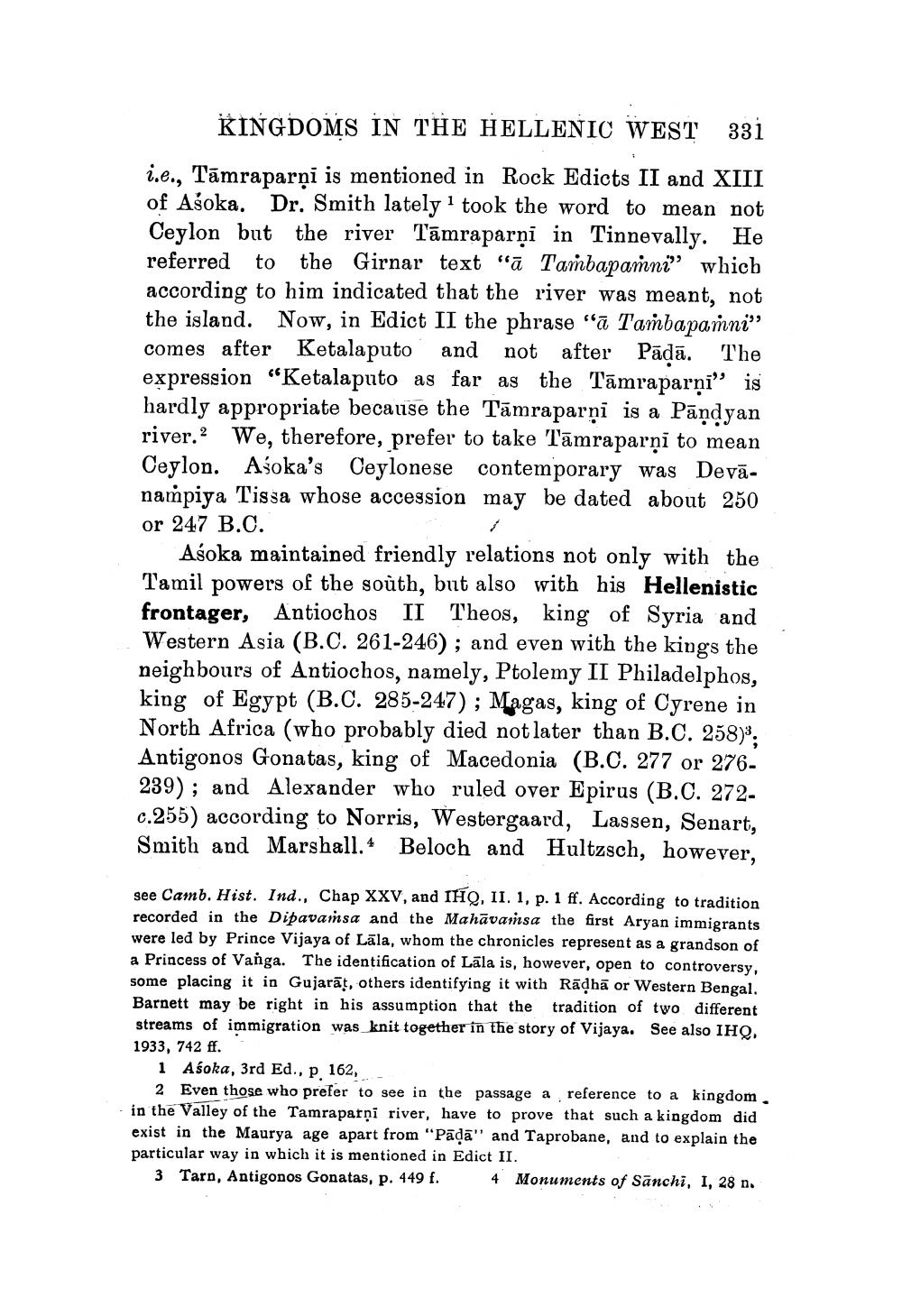________________
KINGDOMS IN THE HELLENIC WEST 331 i.e., Tāmraparņi is mentioned in Rock Edicts II and XIII of Ašoka. Dr. Smith lately 1 took the word to mean not Ceylon but the river Tāmraparni in Tinnevally. He referred to the Girnar text "ā Tambapanni” which according to him indicated that the river was meant, not the island. Now, in Edict II the phrase "ā Tambapani" comes after Ketalaputo and not after Pādā. The expression “Ketalaputo as far as the Tāmraparņi” is hardly appropriate because the Tāmraparņi is a Pāņdyan river. We, therefore, prefer to take Tāmraparņi to mean Ceylon. Asoka's Ceylonese contemporary was Devānampiya Tissa whose accession may be dated about 250 or 247 B.C.
Asoka maintained friendly relations not only with the Tamil powers of the south, but also with his Hellenistic frontager, Antiochos II Theos, king of Syria and Western Asia (B.C. 261-246); and even with the kings the neighbours of Antiochos, namely, Ptolemy II Philadelphos, king of Egypt (B.C. 285-247); Magas, king of Cyrene in North Africa (who probably died not later than B.C. 258)); Antigonos Gonatas, king of Macedonia (B.C. 277 or 276239); and Alexander who ruled over Epirus (B.C. 272. c.255) according to Norris, Westergaard, Lassen, Senart, Smith and Marshall.4 Beloch and Hultzsch, however,
see Camb. Hist. Ind., Chap XXV, and IHQ, II. 1, p. 1 ff. According to tradition recorded in the Dipavamsa and the Mahāvansa the first Aryan immigrants were led by Prince Vijaya of Lāla, whom the chronicles represent as a grandson of a Princess of Vanga. The identification of Lāla is, however, open to controversy, some placing it in Gujarat, others identifying it with Rādhā or Western Bengal. Barnett may be right in his assumption that the tradition of two different streams of immigration was knit together in the story of Vijaya. See also IHQ. 1933, 742 ff.
1 Aśoka, 3rd Ed., p. 162,
2 Even those who prefer to see in the passage a reference to a kingdom · in the Valley of the Tamraparņi river, have to prove that such a kingdom did
exist in the Maurya age apart from "Pādā" and Taprobane, and to explain the particular way in which it is mentioned in Edict II.
3 Tarn, Antigonos Gonatas, p. 449 f. 4 Monuments of Sanchi, I, 28 n.




